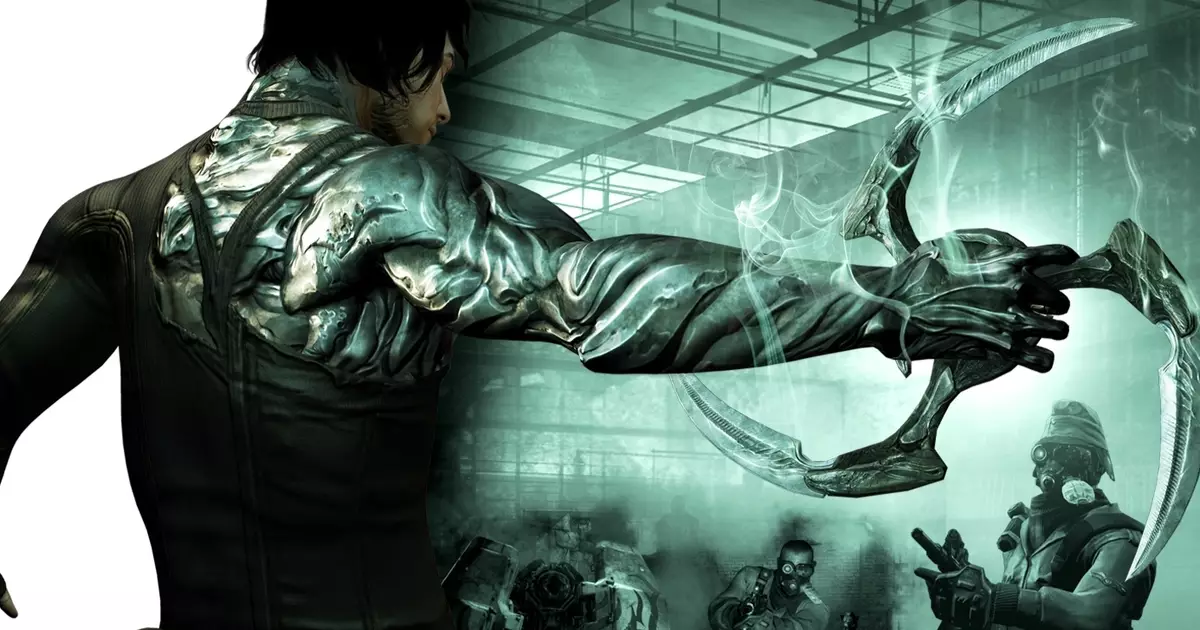Digital Extremes, a studio synonymous with the thrilling gameplay of the Unreal Tournament series, took a noteworthy detour back in 2008 with the launch of Dark Sector. While primarily recognized for their collaboration with Epic Games, Dark Sector’s release positioned the studio into the realm of single-player action gaming. Situated within the stark parameters of double-A titles that embody a gruff protagonist navigating gritty landscapes, Dark Sector introduced players to a captivating yet flawed world. Unfortunately, while the game had its unique charm, it has largely slipped into obscurity.
At the heart of Dark Sector lies the glaive—a formidable weapon that functioned as both a combat tool and a mechanic for puzzle-solving. This pointy boomerang-like weapon allowed players to engage in third-person action, offering a visceral combat experience coupled with environmental interaction. Despite these elements, however, many gamers found the title ultimately unremarkable, leading to its status as a forgettable entry in video game history. In fact, for many critics and players alike, this is the first time the game has been spotlighted in any substantial manner, signaling its largely underappreciated presence in the gaming community.
Interestingly, Dark Sector’s legacy extends beyond its own narrative failures; it serves as the original foundation for what would evolve into Warframe—Digital Extremes’ flagship free-to-play shooter. Released later on, Warframe has since become a genre-defining title, showcasing an intricate gameplay experience adorned with elaborate customization options and a plethora of enhancements. The shift from Dark Sector to Warframe not only demonstrated the studio’s adaptability but also highlighted how initial ideas can transform into ambitious projects over time.
Initially, Dark Sector was conceived as a space-centric adventure, featuring a protagonist equipped with a high-tech mech suit. However, as the game development progressed, the team pivoted to a more grounded, near-real-world setting filled with bioweapons called “Technocytes.” This change reflected the gaming trends of the mid-noughties, an era dominated by narrative-driven experiences akin to B-movie action flicks. The retrofitting of sci-fi elements served to make the story more accessible, reducing the game’s initial complexity but ultimately diluting its distinctive vision.
While Dark Sector may have faltered in its execution, it set the stage for Warframe, a game rich with interstellar lore and dynamic gameplay mechanics. The evolution from a somewhat lackluster title to a vibrant community-driven experience is noteworthy and illustrates the potential for growth within the industry.
As of now, this look back at Dark Sector is particularly poignant since Digital Extremes has chosen to make it available for free on Steam until November 30th. This initiative serves as a nostalgic exploration for existing fans while promoting the studio’s upcoming Warframe expansion, ‘1999,’ which promises to delve into the game’s backstory. However, current sentiments within the community seem to tilt toward Warframe’s ongoing challenges and complexity rather than revisiting its predecessor.
Digital Extremes is not merely resting on the laurels of its more famous title; the studio is also focusing on its ambitious new project, Soulframe, a fantasy RPG that reflects a shift in creative direction. This move indicates an effort to diversify their titles and appeal to broader gaming demographics. For many, the intricate world and systems of Warframe have grown overwhelming after a decade of updates, hence the curiosity surrounding Soulframe.
While Dark Sector may not have garnered the acclaim it aspired to, it remains a pivotal chapter in Digital Extremes’ narrative, linking the dots between past failures and present triumphs. As we await future developments from the studio, the history of Dark Sector serves as a poignant reminder of how initial missteps can pave the way for extraordinary innovations in the gaming landscape. For those intrigued by gaming history or simply looking to experience a piece of Digital Extremes’ legacy, downloading Dark Sector could be worthwhile — if only for the sake of curiosity.

